For me, photography is about knowing something is meaningful and documenting it properly because it may not be here tomorrow. There were a handful of events that shaped this perspective and determined my path as an architectural photographer. My visit to the Mattin Center at Johns Hopkins University in Baltimore, a triangular arrangement of three creative arts buildings around a central courtyard, was one of them. The complex was unoccupied when I was there in 2021, in anticipation of forthcoming change: It would be demolished weeks later, only 20 years after its opening, to make way for a student center designed by BIG.
Mattin was situated on the front southeast corner of campus between the lower elevation of the city and the higher elevation of the school. Its designers, from Tod Williams and Billie Tsien Architects, integrated a series of stairs, ramps, and elevators to navigate the transition between three levels of grade change. As an undergraduate student at the university, I went out of my way to spend time in this corner of campus more than any other academic space. But it would take years for me to fully understand why.
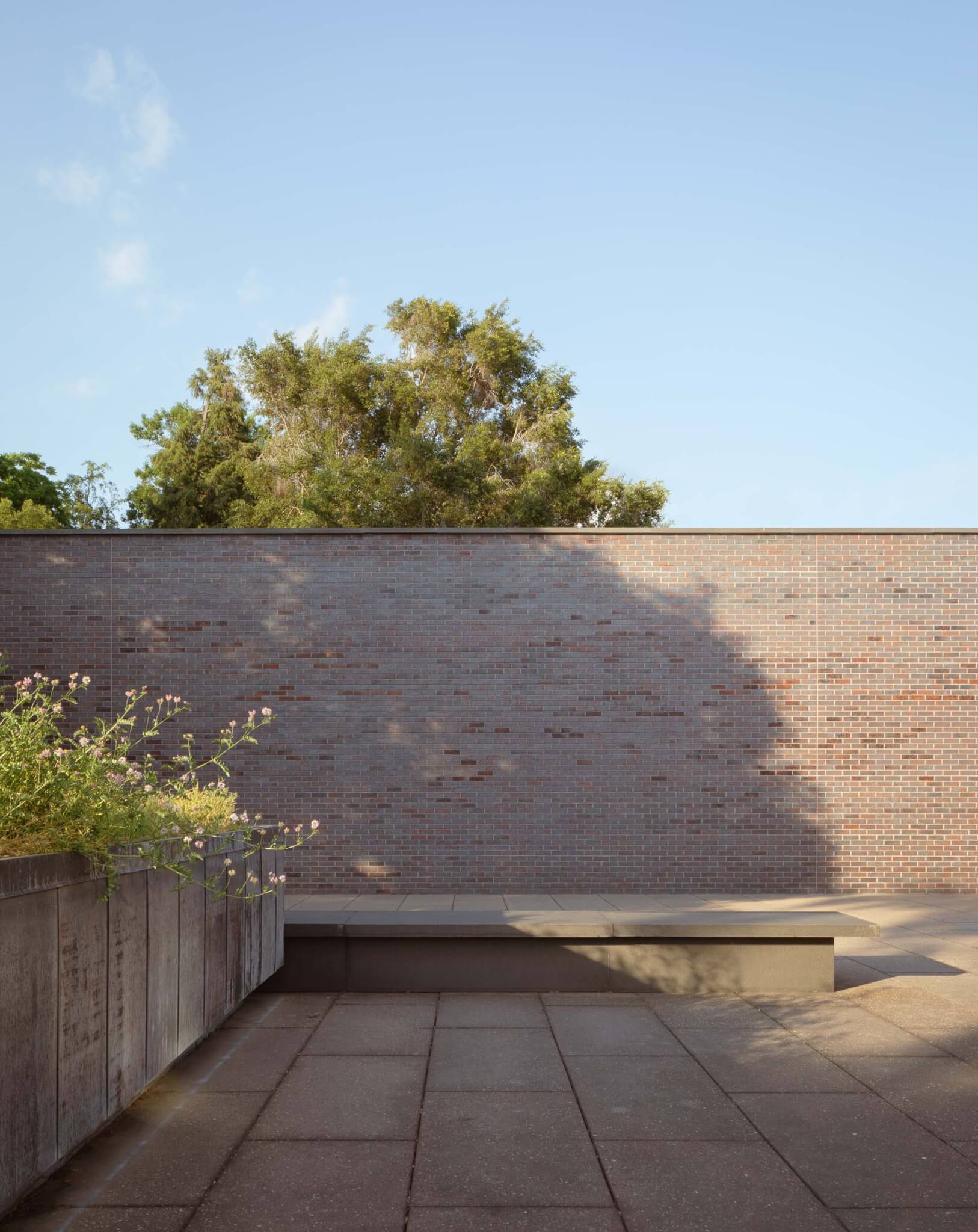
The materials were warm, simple, and cohesive. There were patinated zinc planters that felt clean, substantial, and weighty but not precious, and objects built by human hands, like a sculptural metal fountain with hammered bronze stones. There was seating and wall paneling made from cherry trees that grew on the site prior to construction, rich green tiles, and artwork created by students. There were many intimately scaled, room-like interior and exterior spaces to let students choose their relationship to the surroundings and how they wanted to spend their time between commitments. The spaces offered places to sit alone or gather in small groups, protected from the elements or exposed to them, within the activity of other students, or adjacent to them. Users could pause above the city or nestle deep in its gardens. The circulation paths were not prescriptive or linear: You could sprint through the central axis if you were late for class or meander up and down the ramps to breathe a little if you had time. You could hike up the large central stairs for the most direct route to the library or take a series of smaller steps to break up the workout.
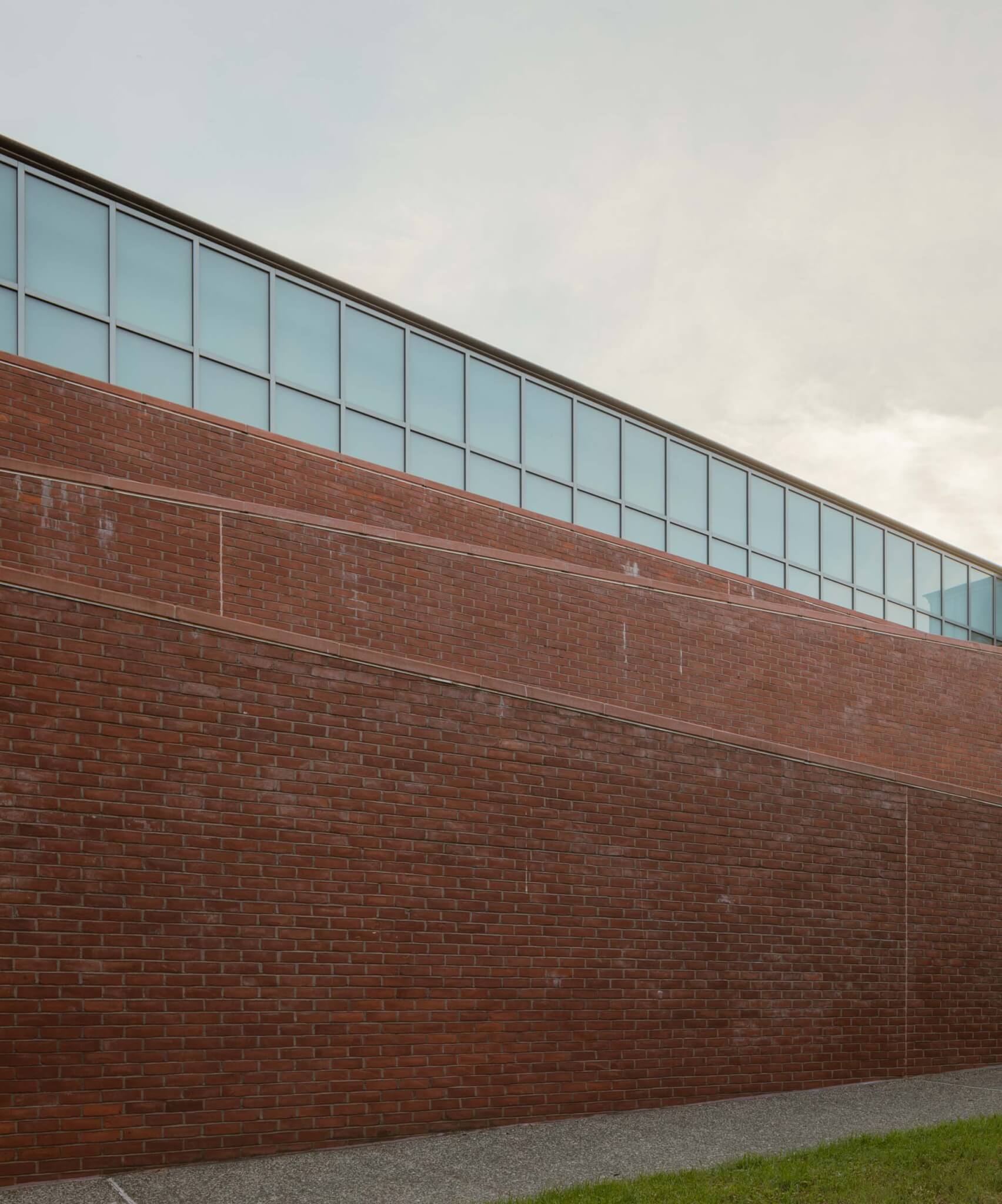
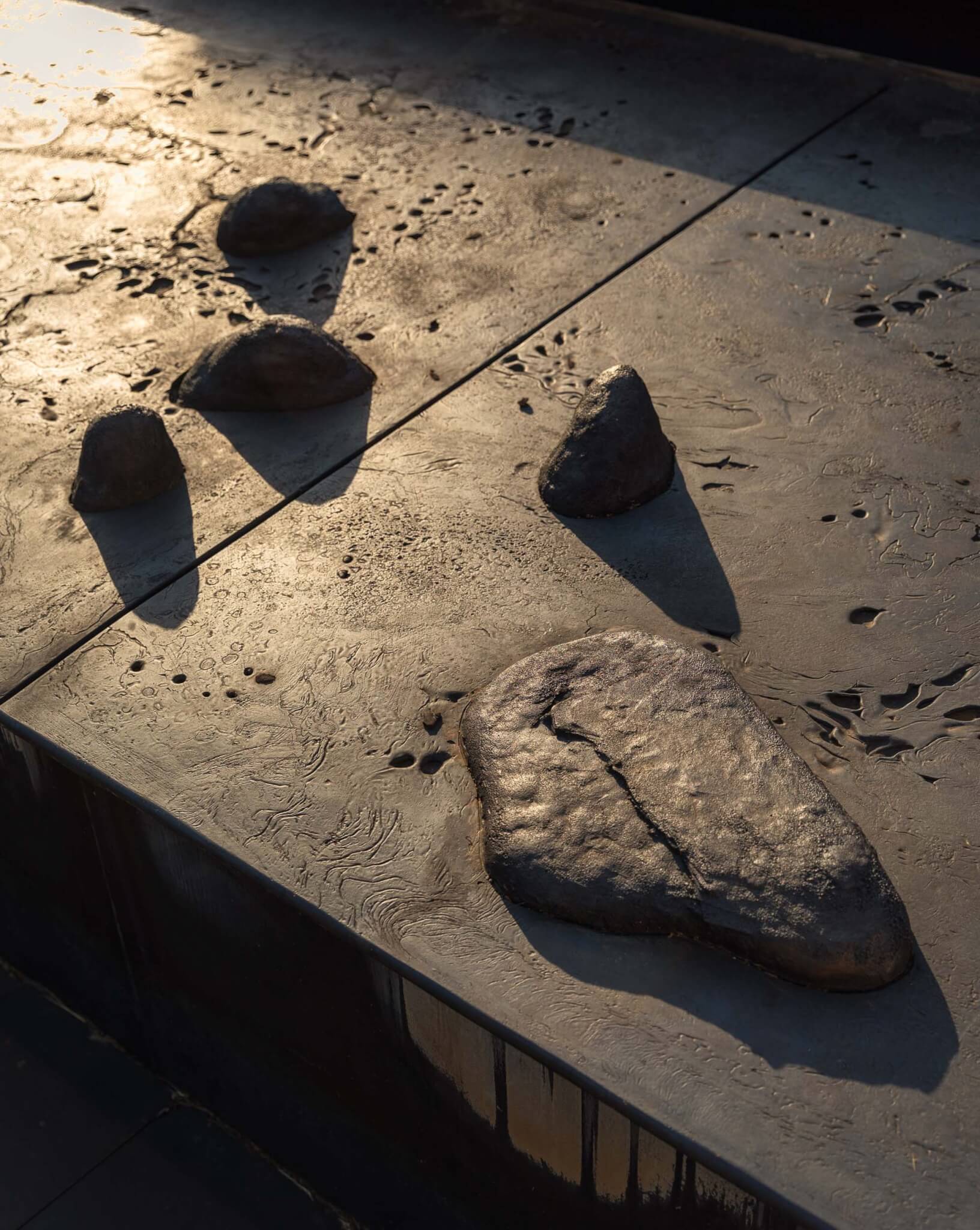
Mattin’s colors were modern and deferential to the university’s existing architecture: The predominant cladding was red brick laid in a running bond pattern, which matched its neo-Georgian neighbors in texture and color. There were other red bricks glazed with a layer of glossy steel gray over the top of them. These bricks, which wrapped the second floor of a black box theater, created a volume that changed in appearance along with the atmosphere. When approached from the main campus, it simply receded into the landscape under dappled shadows. Up close, the glaze, which appeared as brushed and dripping, revealed red clay beneath its variable surface. There were a million different compositional moments on these walls if one stopped to look, and low granite benches invited passersby to do just that. Tall panes of frosted powder-blue glass also changed with the conditions, reflecting the landscape with a gentle monochromatic filter. Mattin was generously scaled, and the buildings felt important but not imposing because they were embedded in the earth and the landscape had matured around them.
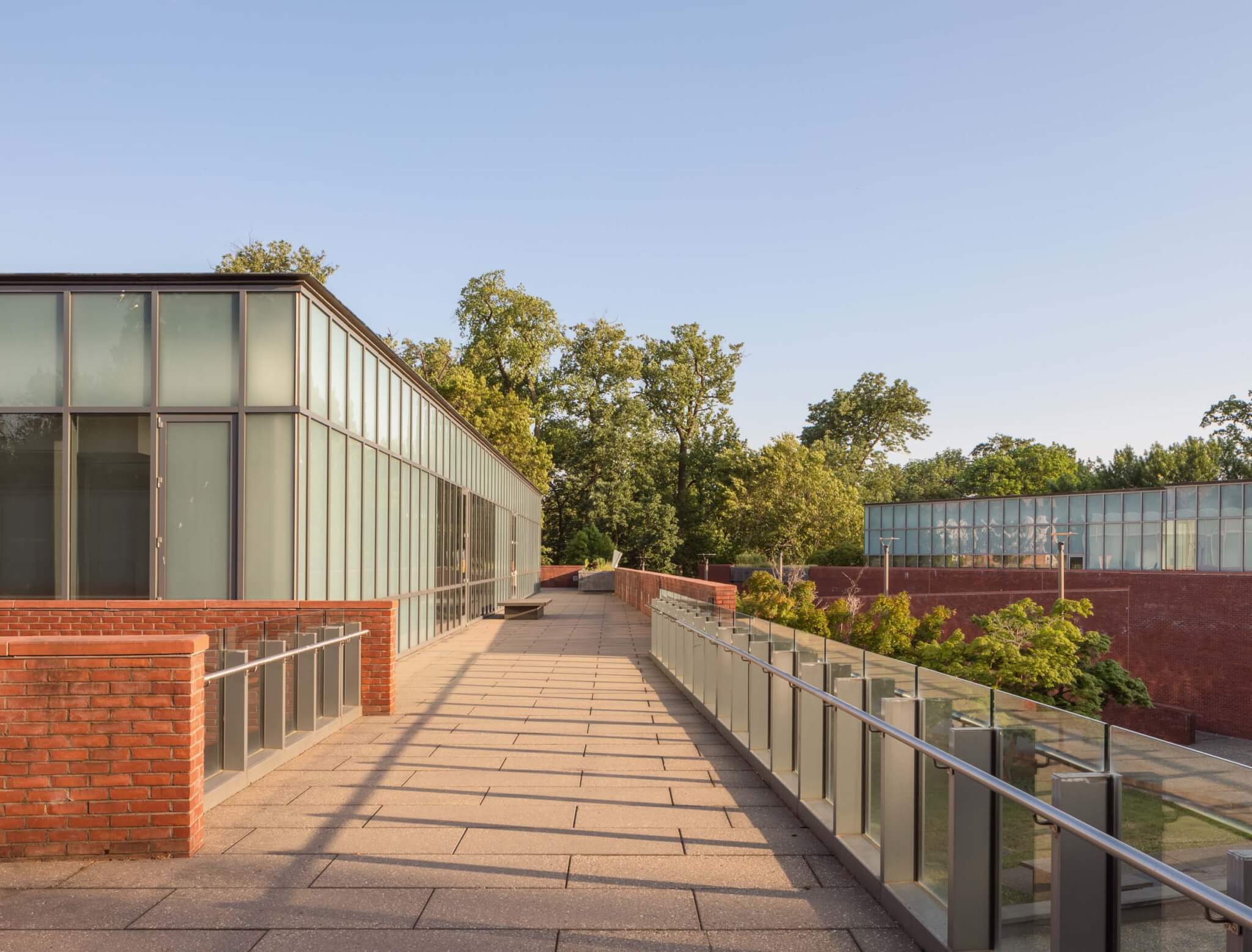
And the light. I’ve long been sensitive to it, which may explain my journey to becoming a photographer. When I photograph a building, I am guided by my emotions, which are influenced by daylight and shadow. Inside Mattin, the light was breathtaking, especially in the common spaces. Large windows and clerestories bathed surfaces in a soft, unobtrusive blanket I could feel wrapped around my entire body. When I moved, the light was displaced around me, like water or smoke.
Nearly everyone experiences the world on the spectrum between chaos and peace, though lately it seems like more of the former. It is a gift to have choices, to be able to disconnect from the anxious flood of everyday concerns, to take a moment for free thought and stillness. And when we get the opportunity, it’s not easy to know what to connect to, or even how to sit quietly without distraction.
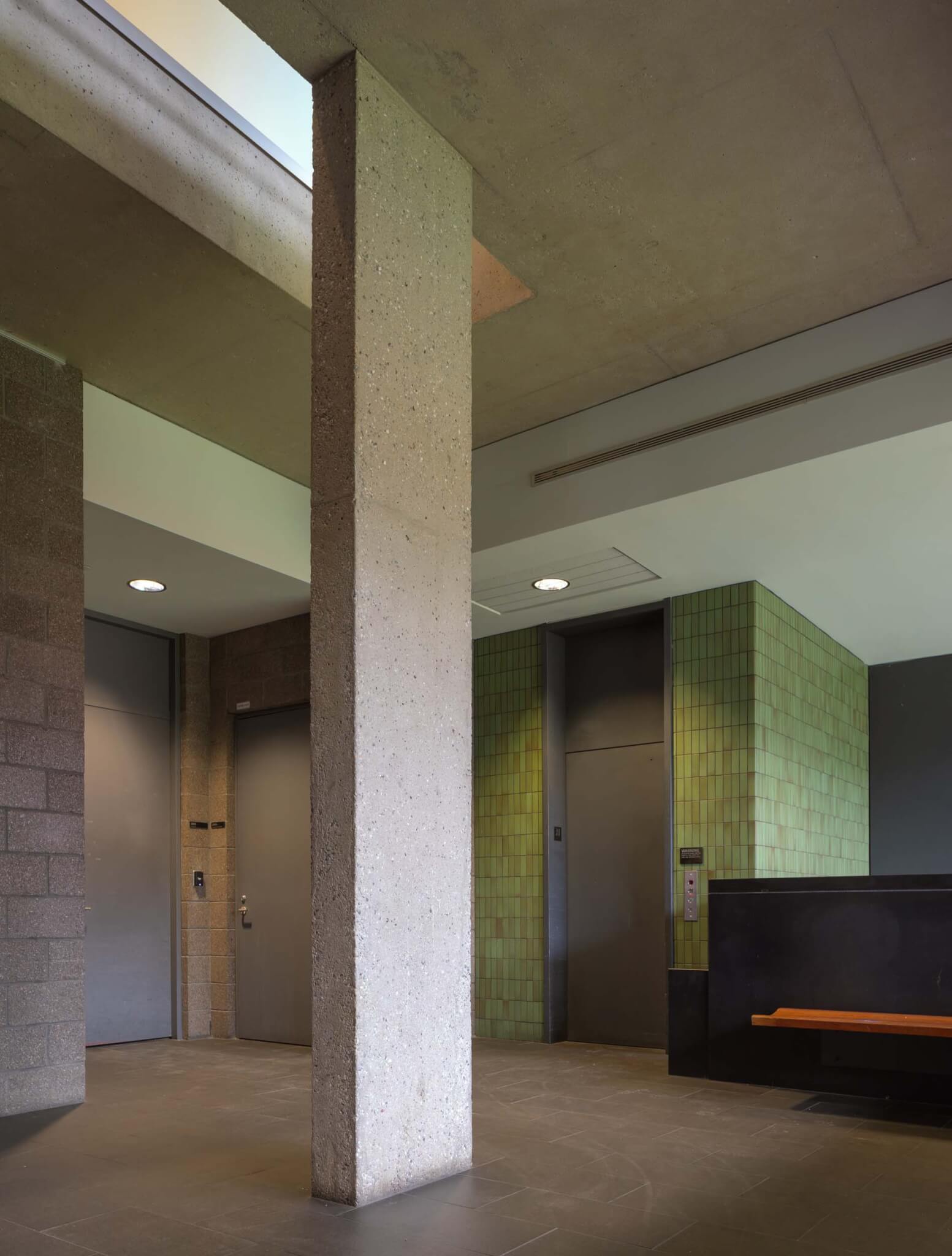
For an instant or an hour, buildings and landscapes like the Mattin Center offer choices in how we use them. There are paths that can excite or calm our nerves, generous transitions with places to rest, and connections that make us feel like we are gripping the earth as much as the earth is holding us close. Buildings like this can center us. They are rare, which makes their demolition that much more difficult to process. I am grateful for my time with them, and I hope my photographs help capture their spirit.
Nicholas Venezia is a photographer based in New York and Connecticut. He photographs the work of architects, landscape architects, interior designers, and artists because it’s meaningful and it might not be here tomorrow.
→ Continue reading at The Architect's Newspaper
